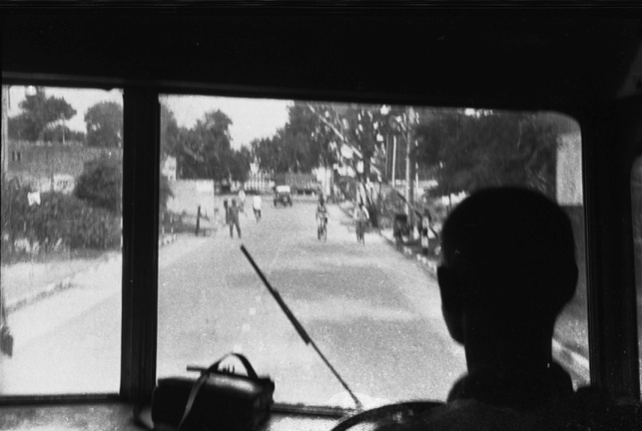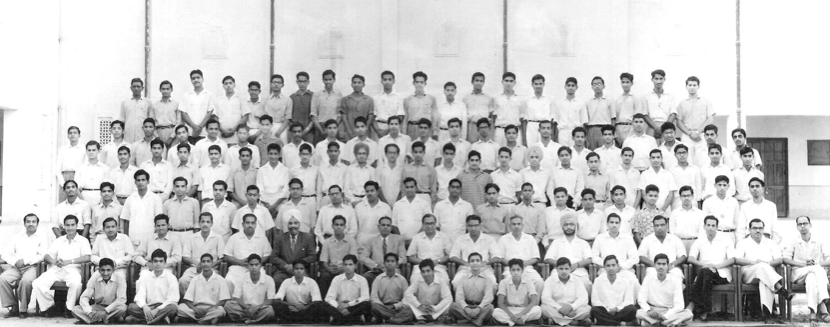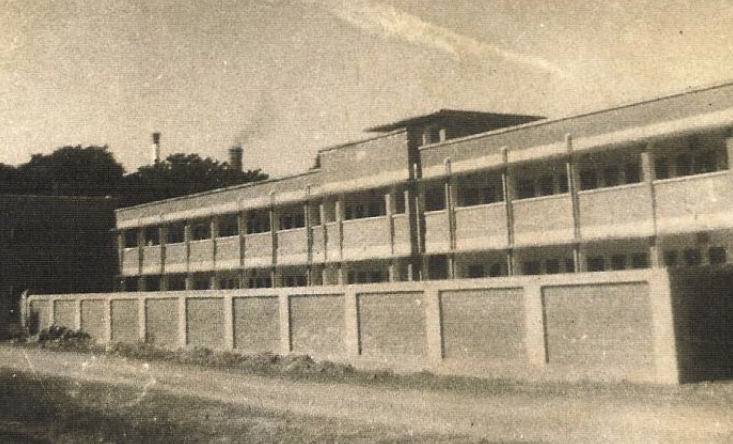Pandit Jawaharlal Nehru, the first prime minister of India, believed that ‘the world will ultimately be saved, if it is to be saved, by the method and approach of science.’ With a vision to achieve industrial and economic freedom, IITs were set up: the one at Kanpur being the fourth in number, registered under Registration of Society Act XXI of 1860 on 2nd November 1959.
Dr. PK Kelkar, the first director of IIT Kanpur, stepped in the city on 14th December 1959. A newly constructed wing of Harcourt Butler Textile Institute (HBTI) was made available to IITK to start functioning. Offices, classrooms, library, laboratories – all were housed there. The pioneer batch was composed of a hundred students, all males, individually selected by Dr. Kelkar from over 7,500 applicants for five disciplines – civil, chemical, mechanical, electrical and metallurgical engineering.
9th August 1960 was the day when selected students were asked to report to the institute at HBTI premises, and the first set of lectures were delivered.


Prakash Khemani, an alumnus of the pioneer batch, recalls his first day at IITK, in a memoir published in the first issue of Voices(e-magazine of the alumni of IITK), January 2013. The first lecture was held at the corner room on the first floor of new wing of HBTI. “The class assembled at around 11 AM, as an apprehensive and a bit shaken group of about 60-70 young men (out of the 100 admitted), waited anxiously for the professor,” recalls Mr. Prakash. Dr. MS Bhatnagar from HBTI, after introducing himself, delivered the first ever lecture of IIT Kanpur. He put forth a question, requiring students to put on their thinking caps – “When should one apply oil to hair – before a bath or after one?”
The class was divided with three differing opinions, as Prof. Bhatnagar involved every student in the class as a part of the discussion. While a group argued to apply oil before bath and the other one for after, the largest group felt that it made no difference. “After a lot of discussions, lasting over an hour, he asked whether any student was aware of the underlying principle behind the question,” writes Mr. Prakash. Well, I will leave the question unanswered here, open for the readers to think through.
Following this intriguing discussion, was Dr. Kelkar’s lecture. He shared his vision with the students and narrated the story of the institute’s birth. He explained the selection procedure as well, which was based on performance in high school. The first batch didn’t take the Joint Entrance Examination(JEE), which was started in the following year. Seats were allotted to top-scorers on a pro-rata basis – criteria being the number of applications received from respective boards.
“He also told us about the IITs in general and his plans for IITK in particular. For most of us, it didn’t mean much. In those days, students were rarely, if at all, concerned about brand equity of their institute. The pleasant, reassuring and paternal manner in which Dr. Kelkar spoke, gave a sense of security to the entire bunch of apprehensive newcomers,” recalls Mr. Prakash.


“He assured us that a journey of a thousand miles begins with a single step, and a great building starts with a mound of dirt,” says Mr. Abhay Bhushan, a member of the pioneer batch.
“The first batch of students who joined IIT Kanpur were the real torchbearers of its spirit which they passed on to the generations of students who followed them. All the old timers on the faculty, I imagine, must be remarking occasionally, particularly when they are wistfully recalling the past, that the first batch was, perhaps, the best batch.” ~Dr. PK Kelkar
After these two lectures, the students moved to their hostels, at the Government Central Textile Institute (GCTI) in Gwaltoli. Mr. Prakash mentions, “Arrangements for food were not yet made. We used to get some sweet buns and butter from a vendor who came on a bicycle to old GCTI hostel at teatime, and had to go out to a ‘Maharaj’ joint, not far from the hostel, for dinner.”


The residents of GCTI were generous enough to ensure that these new kids, being the first batch of a newly established institute, didn’t complain about the lack of “dear” seniors. On 9th August itself, the evening was reserved for “introduction” sessions. The freshers were expected to assemble at the senior side of hostel campus at night. “I have vivid memories of these ragging sessions, when a bunch of us on successive days, were woken up late at night and marched in front of a large group of Textile Institute seniors, who tried to intimidate us, by shouting at us and threatening to strip us and mete out other punishments if we did not obey them,” mentions Mr. Abhay. Poor folks, they were not graced with the “strict” anti-ragging guidelines, as are students today.
As the clock kept ticking, the students got back to their rooms and fell into an unassuming slumber, I am not sure, how many of them would have realised, back then, the significance of the day they had lived. This marked the beginning of an era, the birth of a fraternity and journey of an institution, what would become the IIT Kanpur we know today.
Written by Samarth Bansal





































